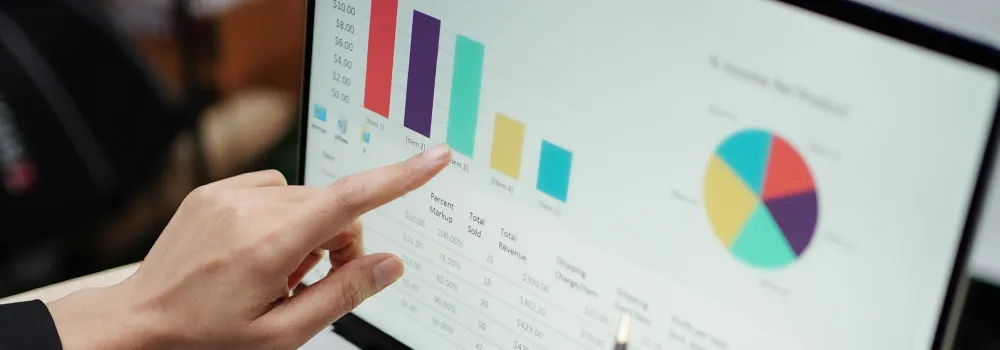Nonprofits generate data from nearly all of their operations, including programs, donor engagement, and internal practices. While large datasets can be challenging to manage, the information stored in them is essential to helping your nonprofit grow and improve its services.
If you're looking to grow your nonprofit, it's essential to manage and leverage your data. By using the right software solutions and technology, you can simplify reporting, identify important trends, and make your employees more efficient. The primary platform nonprofits should invest in to improve their data management is a CRM. A CRM—an abbreviation for constituent relationship management—system is a centralized database that stores information related to nonprofit constituents, programs, finances, and any other relevant data depending on the platform's features and integrations.
To boost your nonprofit's initiatives, improve your digital marketing plan, and streamline internal operations, continue reading to learn three ways you can create an organizational framework by using the data you already have.

Create donor profiles
Donor profiles are records that are created automatically when a supporter first interacts with your nonprofit by volunteering, signing up for your newsletter, or making a donation. You can use your CRM to steward these relationships and learn more about your donors.
Nonprofits use donor profiles to keep track of various information about their supporters based on their organization's unique donor journey and data management practices. For nonprofits getting started with donor profiles, consider tracking the following data points as a baseline:
- Demographic data. In each donor's profile, make note of their name, age, and location. By understanding the characteristics of your donors, you can tailor your appeals and create targeted emailing lists. For instance, you may want to invite local donors to in-person events that remote donors can't attend. A separate email list would allow you to do this effectively while respecting the inbox of those who cannot attend.
- Engagement history. Whenever a donor engages with your nonprofit, track the interaction in their donor profile. Some interactions, such as donating, can be recorded automatically. Others, such as attending a small gathering of prospective major donors, will need to be recorded manually. This data can help you tailor your approach to each donor by highlighting activities similar to ones they have engaged in previously or referencing their history with your nonprofit in messages to acknowledge their specific contributions.
- Prospects for major giving. Major giving candidates require careful tracking to ensure your major gift officers make their ask at the right time and for the right project. Relationships with major donors often span multiple years, and keeping a consistent record can be essential for continuing cohesive engagement if major gift officers leave or join your nonprofit.
Your CRM can help you streamline your donor profile management. Choose a CRM that comes with a tagging system that allows you to mark donor profiles based on their various activities. For example, you might create a tag for recurring donors who give above a certain amount, then use that tag to gather reports on those donors and send them unique donation requests.

Optimize your resource allocation
As a nonprofit, it's crucial to manage your resources strategically to meet program obligations while covering basic operational expenses. When you efficiently utilize your existing resources, it not only builds trust with donors but also ensures that their contributions are acknowledged and put to good use.
Carefully recording your data not only allows you to provide accurate reports to donors, but also helps monitor your own progress and make evidence-based decisions about your programs. Your CRM and other data management tools can help you track your resources, with features such as:
- Budgeting and accounting tools. Choose a CRM that comes with or integrates with add-ons that allow you to manage your finances. Basic bookkeeping features can help nonprofits track their spending.
- Automation. Use automation tools to help speed up routine data processes like migrating, updating, and maintaining your data. For example, you might use a data hygiene tool that automatically identifies duplicate profiles and creates an alert that your team can resolve at your convenience. This saves your team time that would be otherwise spent going through your database manually.
- Conversion tracking. How effective are your marketing efforts? Reporting tools can track metrics such as your open, clickthrough, and conversion rates to determine the most effective outreach strategies. Using this data, you can focus your resources on the platforms and marketing methods that have the greatest return on investment.
Additionally, consider how to allocate your resources when it comes to maintaining your data and software. If your nonprofit intends to invest in new software platforms, you may also consider hiring a new staff member to manage them. For many organizations, it can be more cost-effective to employ a third-party consultant. These consultants can provide ongoing technology services as needed for a lower monthly cost than hiring a new internal team member.

Integrate your software
If your nonprofit uses several platforms, you may encounter issues related to data getting siloed in separate systems. This can slow down your workflow and complicate your reporting. You can solve this problem by integrating your software.
Software integrations act as bridges between platforms, allowing data to flow between them. For example, you might integrate your project management software and billing platform to determine how many hours contractors are assigned to work on for each project. This would allow you to better schedule these team members and allocate their time to high-priority projects more easily.
By storing data in one centralized platform, you can also find connections between data. For example, integrating your volunteer platform and donor database might help you find volunteers who share many characteristics with your donors, helping you identify volunteers to target with gift requests.
To integrate your software, partner with a technology consultant who is familiar with the platforms in your technology stack. These consultants have experience building custom integrations and middleware solutions that ensure your data syncs smoothly. They can also help you determine the parameters of your integration, such as whether you want your data to sync in real-time or once per day.
Nearly every action your nonprofit takes generates data, and this information can be used to improve donor relationships, advance your programs, and streamline employees' workflows. Maximize your data's potential by organizing it into easily searchable databases and profiles. Ensure your tools are automated to collect this data quickly and keep it organized, setting your team up for success.





